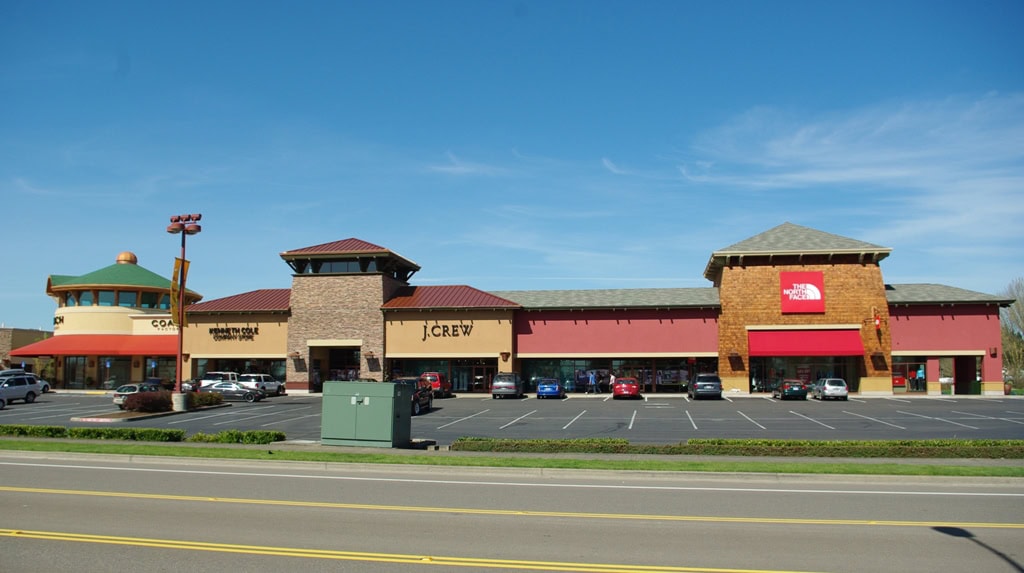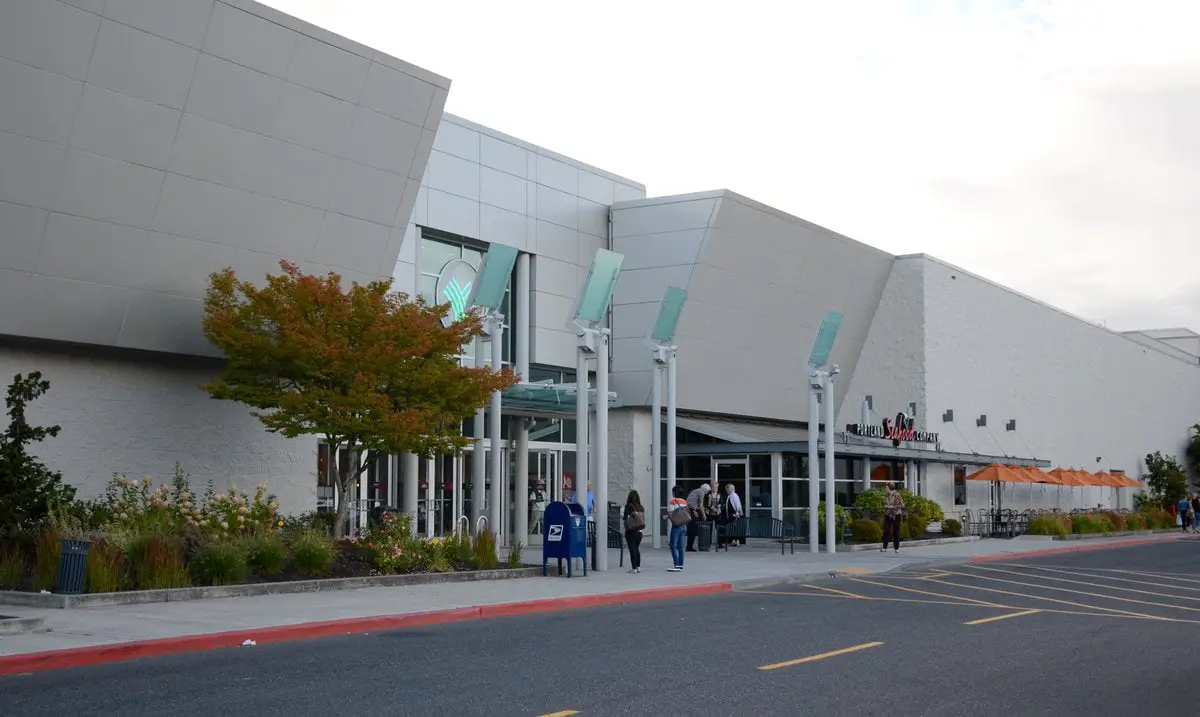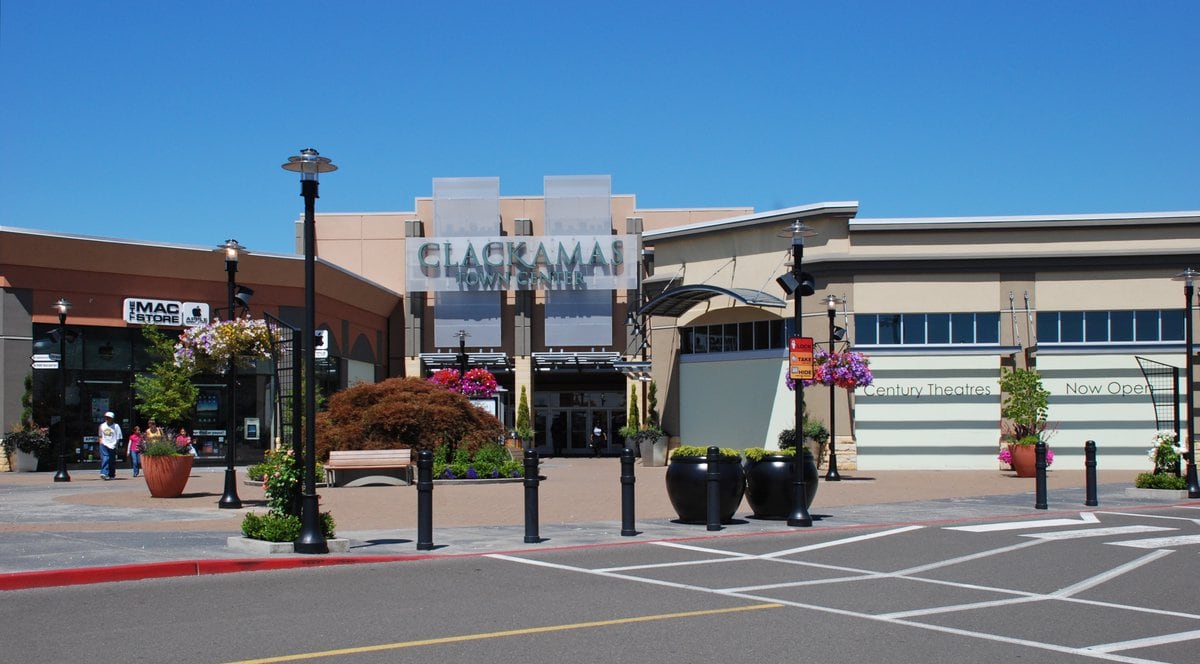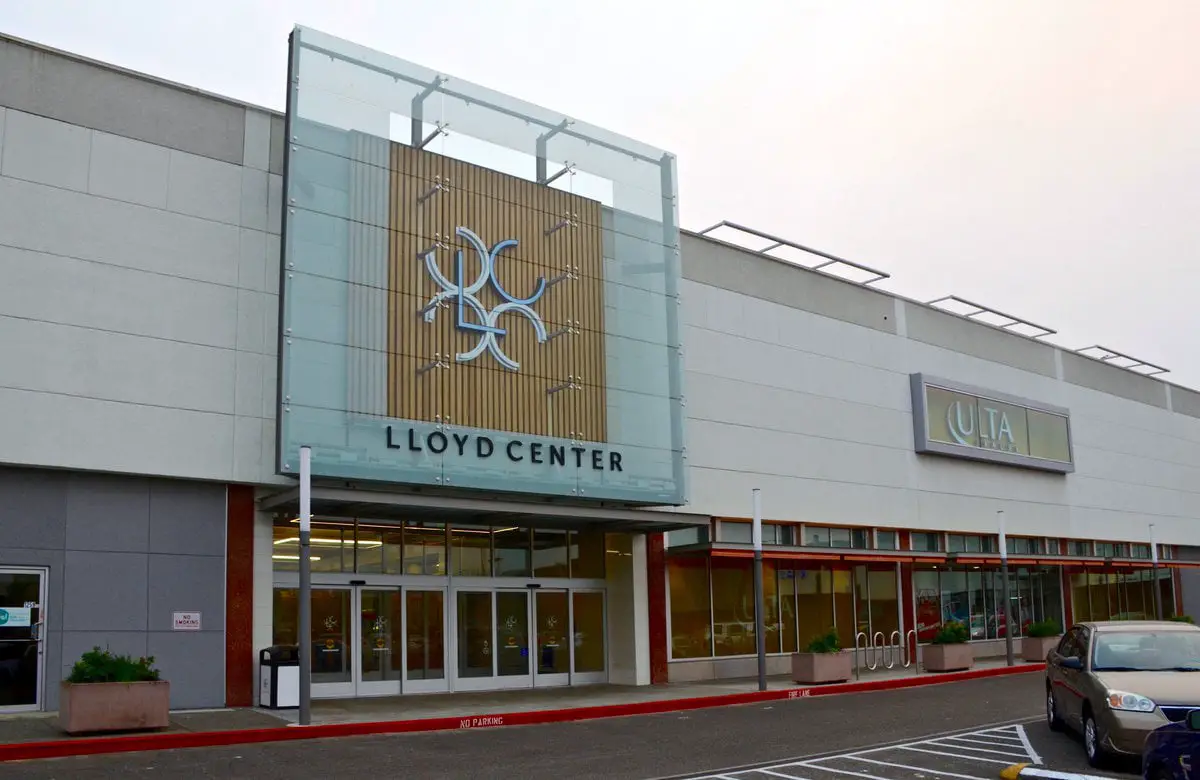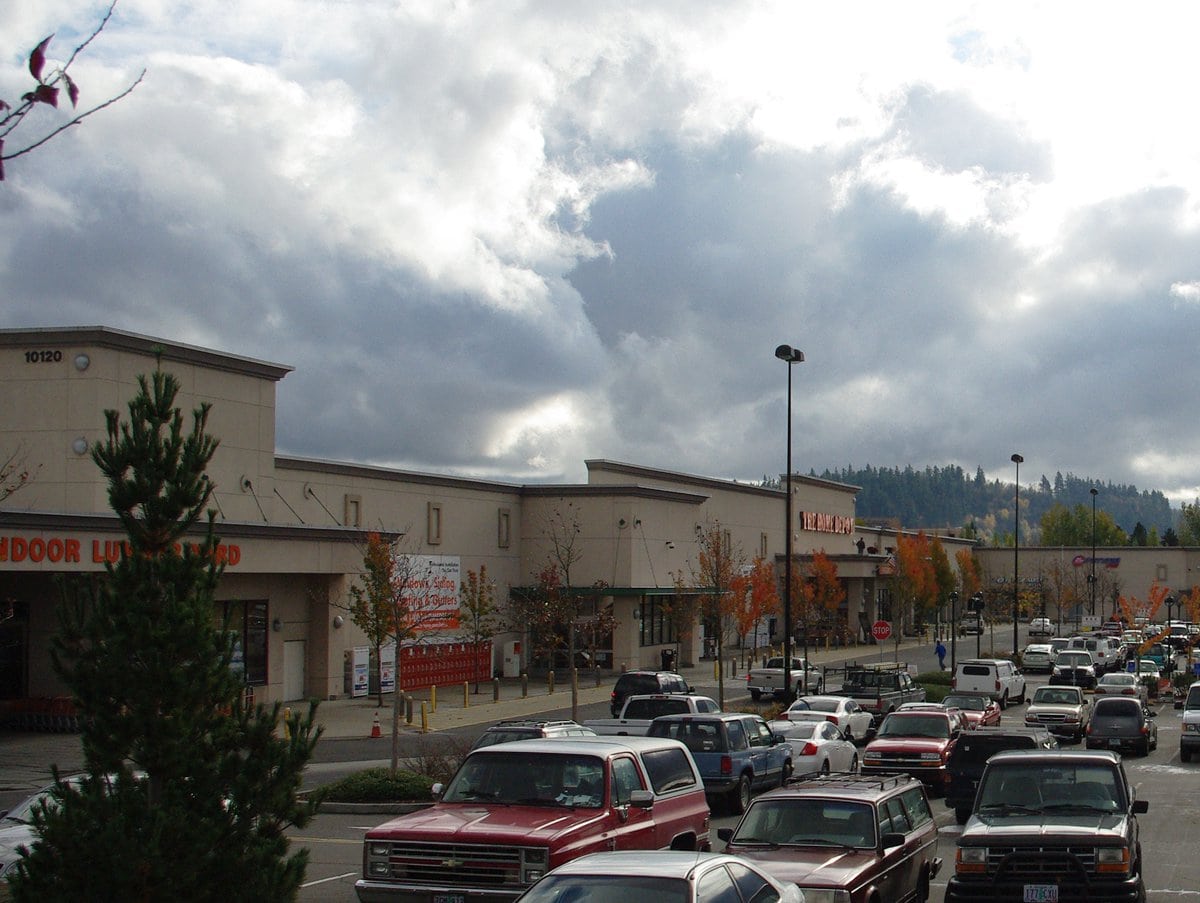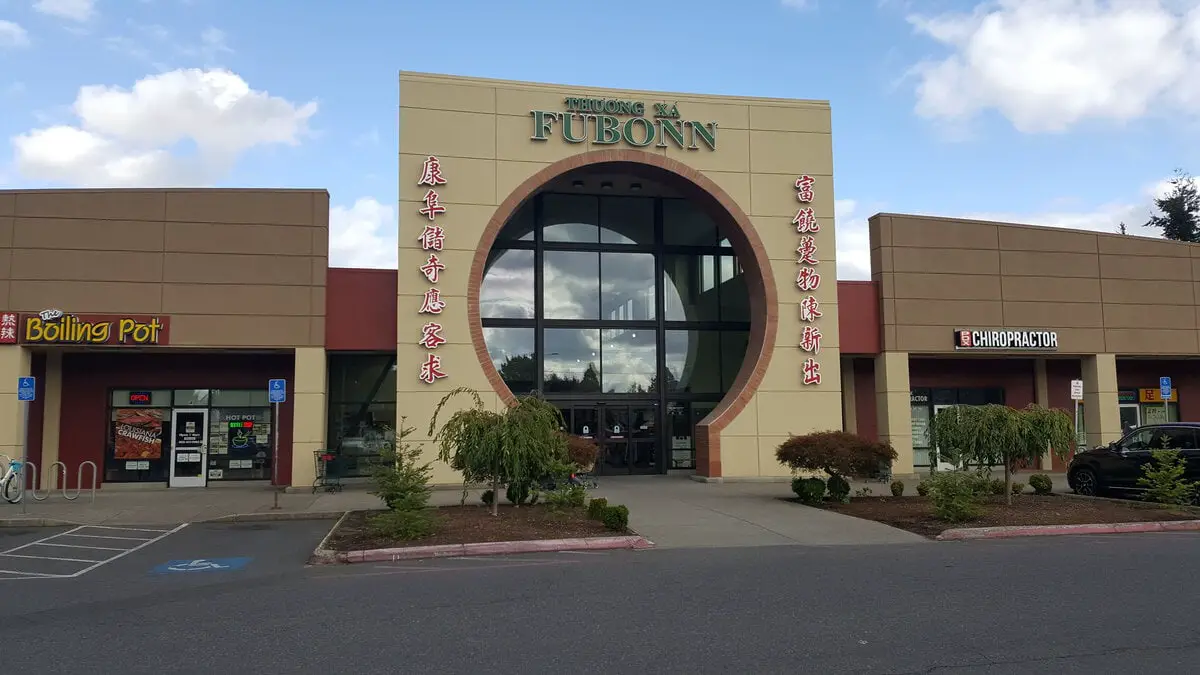The Birth of Lloyd Center: A Pioneering Concept
In the heart of Portland, Oregon, Lloyd Center emerged as a beacon of retail innovation. Lloyd Center’s ambitious vision was conceived in 1923 by Ralph B. Lloyd, a southern Californian oil tycoon.
It aimed to create a self-sufficient community hub, combining residential areas with a shopping center.
However, this vision didn’t materialize until 1960, largely due to the Great Depression, World War II, and Portland’s conservative stance on development.
Opening on August 1, 1960, Lloyd Center set a new standard for shopping experiences in the Pacific Northwest.
At its inauguration, it claimed the title of the largest shopping center in the region and, arguably, in the country.
Designed as an open-air mall, Lloyd Center offered a refreshing alternative to the traditional enclosed shopping spaces that were common at the time.
With over 100 stores, it was a retail paradise that catered to a wide range of tastes and needs.
The mall’s strategic location, close to downtown Portland, leveraged the city’s growing freeway system to attract commuters.
This location also directly competed with the downtown retail core, challenging the traditional shopping districts and redefining where Portlanders shop.
The original anchor stores are Meier & Frank in the center, Best’s and Nordstrom’s Shoes on the west end, and J.
C. Penney and Woolworth on the east and J. J. Newberry to the north were pivotal in establishing Lloyd Center’s retail dominance.
Notably, the Newberry store at Lloyd Center was the largest in the national chain at its opening, underscoring the mall’s significant scale and ambition.
The Seattle-based Nordstrom’s Shoes chain acquired Best’s apparel in 1963.
Its rebranding efforts culminated in the adoption of the Nordstrom nameplate in 1973, marking a significant milestone in the mall’s retail evolution.
Lloyd Center’s design, with its open-air layout and expansive store roster, attracted shoppers and set a benchmark for shopping centers across the Pacific Northwest.
In exploring things to do in Portland, Oregon, the history of Lloyd Center offers a fascinating glimpse into the city’s commercial evolution and its role in shaping local shopping habits.
As we delve further into Lloyd Center’s journey, it becomes evident how this pioneering project reflected broader trends in retail, urban planning, and community development.

Expansion and Reinvention Over the Decades
Lloyd Center has seen several transformations since its opening in 1960, aiming to keep pace with the evolving retail landscape.
The first major expansion occurred in the fall of 1972, adding six stores, including a significant 50,000 sq ft Lipman’s, showcasing the mall’s ambition to grow and diversify its offerings.
This period began Lloyd Center’s efforts to expand its footprint and attract a broader range of shoppers and retailers.
By 1988, the shopping landscape had shifted towards enclosed malls, prompting Lloyd Center to renovate from 1988 to 1991.
This renovation fully enclosed the mall, introduced a food court, and marked the replacement of the original Nordstrom store with a newer, larger one in 1990.
These changes were not just cosmetic but strategic, aiming to enhance the shopping experience and meet the expectations of modern consumers.
The transition to an enclosed mall marked a significant shift in Lloyd Center’s approach, aligning with wider retail changes.
This move aimed to create a more controlled and comfortable shopping environment, protect the mall from Portland’s unpredictable weather, and make it a year-round destination.
Throughout these years, Lloyd Center remained a staple of Portland’s retail scene, adapting to changing trends and consumer behaviors.
Each renovation and expansion effort aimed to stay relevant and competitive in a fast-paced industry.
Despite these efforts, the challenges of the digital age and changing shopping habits would eventually test Lloyd Center’s resilience, leading to the more recent struggles the mall faces today.
Decline of a Retail Giant
The decline of Lloyd Center reflects a broader trend affecting many traditional malls, driven by shifts in shopping habits and the rise of online retail.
By the late 2000s, signs of struggle became evident, and key anchor stores began to close their doors, one after the other.
Nordstrom, a longstanding tenant, announced its departure in January 2015, significantly damaging the mall’s foot traffic and appeal.
Sears followed, closing in April 2018, Marshalls in January 2019, Macy’s in January 2021, and Old Navy in January 2021, leaving vast empty spaces that were once bustling with shoppers.
These closures signaled a challenging era for Lloyd Center and the mall industry.
With each anchor store that left, smaller retailers faced dwindling visitor numbers, making it increasingly difficult for them to thrive.
The exit of Sears, Nordstrom, and Macy’s marked both a loss of anchors and the end of the mall’s prime status.

The growing preference for online shopping compounded the impact of these closures.
Consumers began to favor the convenience and variety e-commerce platforms offer over traditional brick-and-mortar stores.
This shift posed a fundamental challenge to Lloyd Center’s business model, which relied heavily on foot traffic and the draw of its anchor stores.
Lloyd Center Today: A Shadow of Its Former Self
Today, Lloyd Center vividly illustrates traditional malls’ challenges in the digital era.
Walking through its corridors, the absence of anchor tenants is palpable, leaving a void that smaller retailers struggle to fill.
The once-bustling aisles, teeming with shoppers carrying bags from various stores, now echo with the quiet footsteps of a fraction of their former crowds.
To adapt to the changing retail landscape, Lloyd Center has welcomed non-traditional tenants, including office spaces and educational institutions like Carrington College.
The food court and Lloyd Center Ice Rink still draw visitors, but more than these attractions are needed to revive the mall’s former vibrancy.
The ice rink, a nostalgic emblem of the mall’s heyday, has undergone renovations to maintain its appeal, yet the challenge of attracting consistent foot traffic remains.
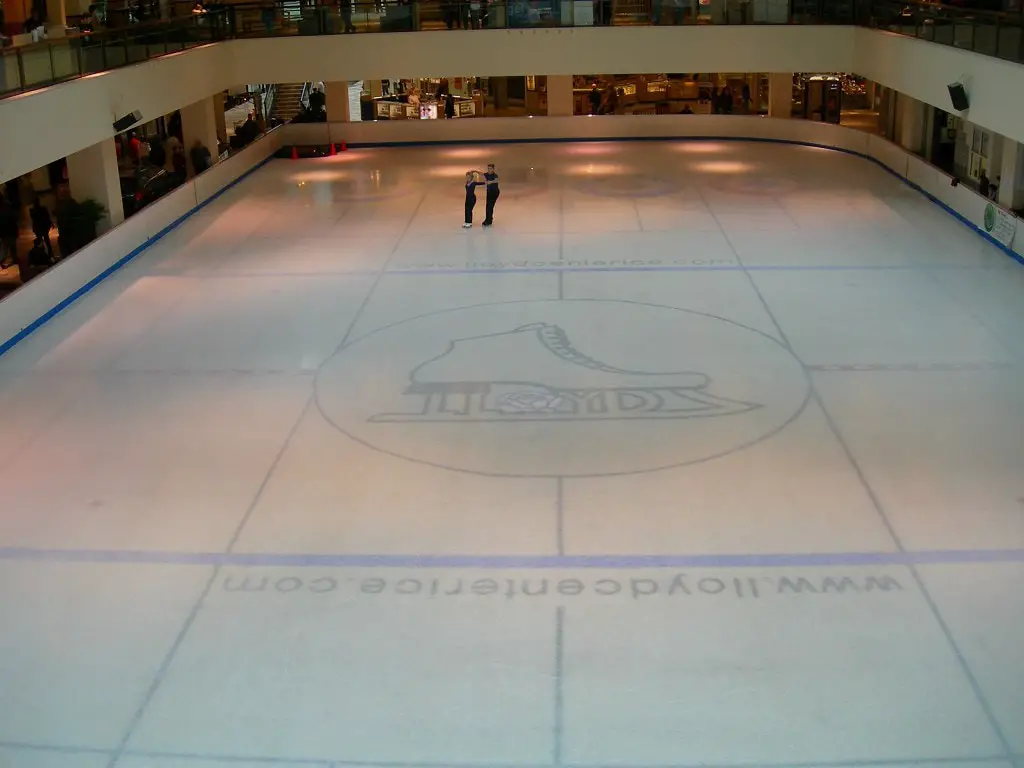
Despite these efforts, the reality is stark. Large mall sections showcase vacant storefronts, a testament to the difficulties of sustaining retail operations in an increasingly online world.
As Lloyd Center contemplates its future, the potential for redevelopment looms large.
Locals and urban planners are discussing transforming mall parts into residential spaces or mixed-use areas.
Such a transformation could inject new life into the complex, offering a blend of retail, living, and recreational spaces that could redefine the concept of a mall for the 21st century.
Yet, as it stands today, Lloyd Center reflects the past, navigating an uncertain path toward reinvention.
Former Sears at Lloyd Center: A Symbol of Change
The story of Lloyd Center wouldn’t be complete without mentioning the former Sears store.
Once a bustling hub of activity, the store now stands vacant, a silent testament to the changing retail landscape.
In late 2021, an affiliate of Cypress Equities, the Texas company that owned the mall, filed for bankruptcy.
This led to the Sears store, which is still owned by the same affiliate, being put up for sale.
The property, spanning nearly 143,000 square feet, is now on the market.
Prospective buyers ‘ deadline to submit their bids is April 17, 2024. This date marks not just the culmination of a sale process but also the beginning of potential new developments for the Lloyd Center area.
The property offers an imaginative investor a blank canvas: a four-story building on 1.5 acres, currently vacant and ripe for reinvention.
The mall’s strategic location—a mere 2.4 miles from downtown Portland—accentuates its appeal.
It promises easy access via I-84, the MAX Light Rail, and the Portland Streetcar (Hilco Global).
This development is a stark reminder of traditional retail outlets’ challenges in the digital age.
Yet, it also presents an opportunity for reinvention.
As I look at the vacant store, I can’t help but imagine the possibilities it holds for Lloyd Center’s future.
Only time will tell whether it will be repurposed or replaced.
But one thing is certain—this former Sears store will always be part of Lloyd Center’s rich history.
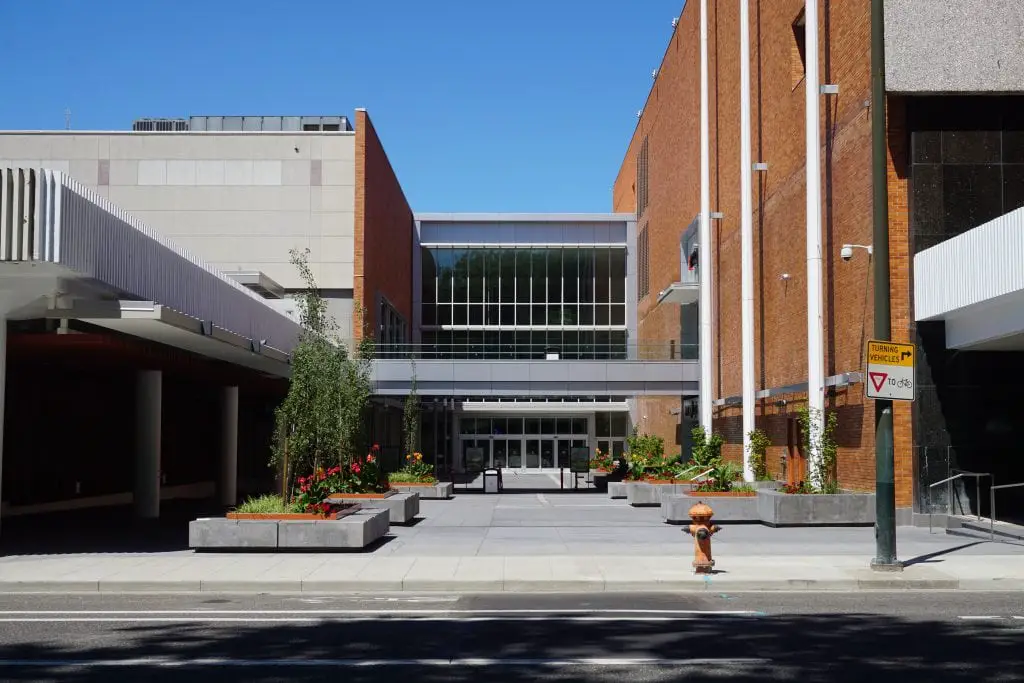
The Path Forward: Redevelopment and Reimagining
The future of Lloyd Center hinges on a comprehensive redevelopment plan that seeks to adapt the mall into a mixed-use space.
Urban Renaissance Group, the entity now steering Lloyd Center’s destiny, unveiled a vision in 2023 that proposes a bold transformation.
The plan includes introducing 5,000 residential units into the mall’s expansive footprint while preserving the iconic ice rink, a nod to maintaining a piece of the mall’s historic charm amidst sweeping changes.
Blending residential living with retail and recreational spaces is familiar, but it reflects a growing trend in urban redevelopment.
This approach aims to create vibrant, self-sustaining communities where people can live, work, and play in proximity.
This could mean a much-needed injection of life and activity for Lloyd Center, potentially reversing the mall’s fortunes.
Financing such an ambitious project is a monumental task. The managing directors have hinted at utilizing tax increment financing (TIF), which uses future tax gains to fund current improvements.
This shows a dedication to renovating the space and supporting community development.
The Lloyd Center redevelopment plan is more than a commercial venture; it’s an opportunity to reimagine what a mall can be in the 21st century.
However, as with any major redevelopment, there are challenges, from securing the necessary funding to ensuring the project aligns with the community’s needs and expectations.
Lloyd Center’s path forward is filled with potential, poised to turn a page in Portland’s history.

